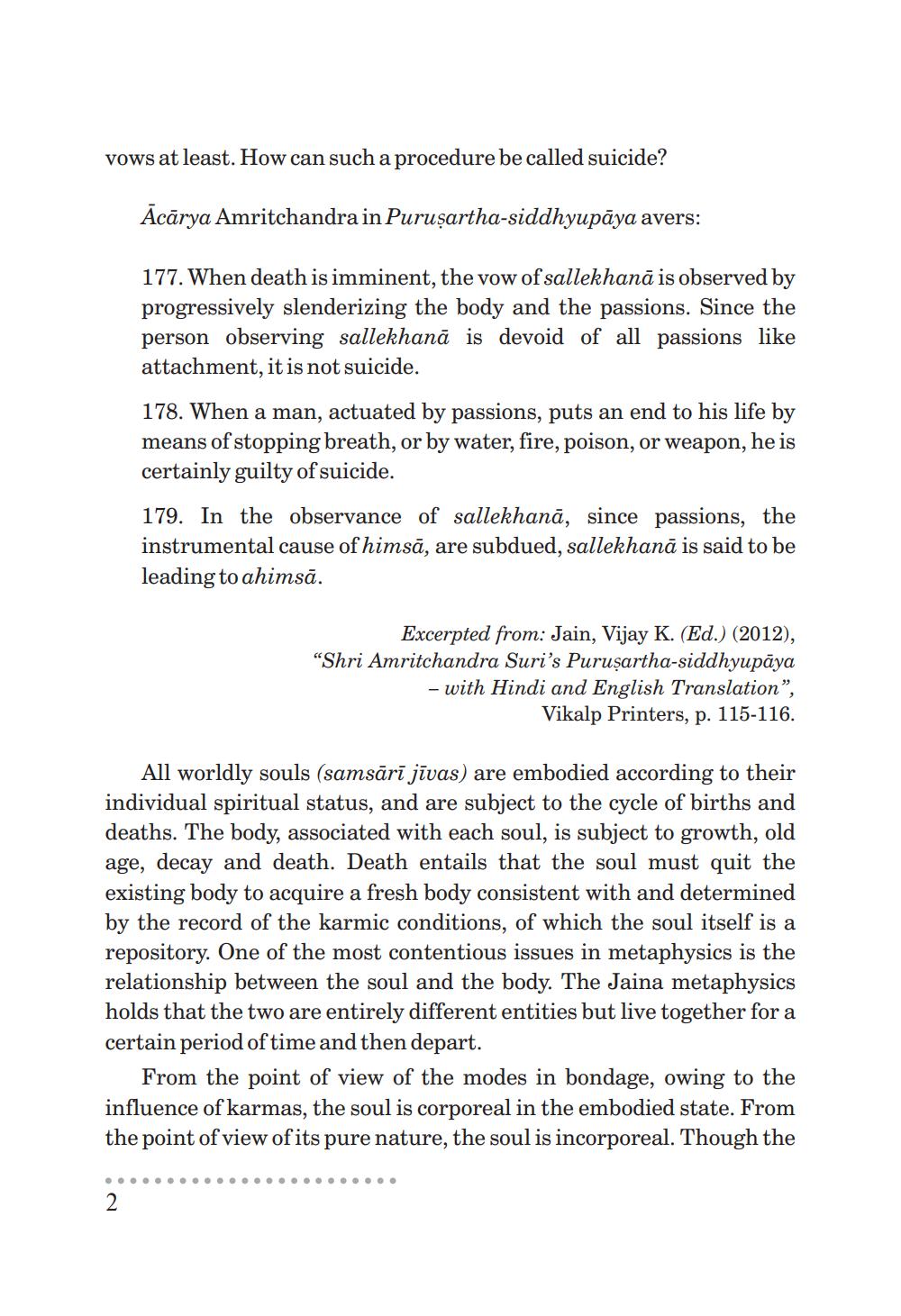Book Title: Sallekhana Zenith of Human Life Author(s): Vijay K Jain Publisher: Vijay K Jain View full book textPage 2
________________ vows at least. How can such a procedure be called suicide? Ācārya Amritchandra in Puruşartha-siddhyupāya avers: 177. When death is imminent, the vow of sallekhanā is observed by progressively slenderizing the body and the passions. Since the person observing sallekhanā is devoid of all passions like attachment, it is not suicide. 178. When a man, actuated by passions, puts an end to his life by means of stopping breath, or by water, fire, poison, or weapon, he is certainly guilty of suicide. 179. In the observance of sallekhanā, since passions, the instrumental cause of himsā, are subdued, sallekhanā is said to be leading to ahimsā. Excerpted from: Jain, Vijay K. (Ed.) (2012), "Shri Amritchandra Suri's Purusartha-siddhyupāya - with Hindi and English Translation", Vikalp Printers, p. 115-116. All worldly souls (samsārī jīvas) are embodied according to their individual spiritual status, and are subject to the cycle of births and deaths. The body, associated with each soul, is subject to growth, old age, decay and death. Death entails that the soul must quit the existing body to acquire a fresh body consistent with and determined by the record of the karmic conditions, of which the soul itself is a repository. One of the most contentious issues in metaphysics is the relationship between the soul and the body. The Jaina metaphysics holds that the two are entirely different entities but live together for a certain period of time and then depart. From the point of view of the modes in bondage, owing to the influence of karmas, the soul is corporeal in the embodied state. From the point of view of its pure nature, the soul is incorporeal. Though thePage Navigation
1 2 3 4 5
